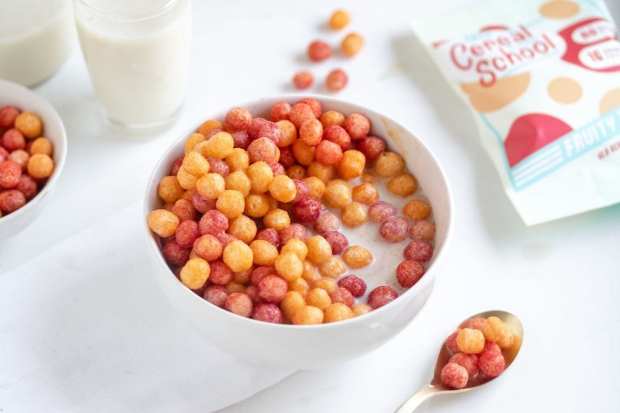Taking Breakfast Cereal To Innovation ‘School’

Some entrepreneurs aim to reinvent food categories when they can’t find options to meet their nutritional needs. The Cereal School Co-founder Dylan Kaplan helped start the company after he and Helen Guo, co-founder and CEO, wanted to try to cut sugar out of their diets and live a healthier lifestyle.
“We realized it was really hard to do,” Kaplan told PYMNTS in an interview, “and we loved cereal growing up.” When they looked at the cereal aisle, however, they realized there weren’t many options that didn’t have sugar. A few big players had dominated the industry for decades, and there hadn’t been much innovation. They began to consider how they could redesign cereal in a healthy way, with the belief that “we should be able to have delicious cereal with no sugar.”
They also thought part of the problem was that cereal comes in big boxes and often goes stale in the back of the cupboard. They decided to create packaging that works with how people live today – portable, on-the-go and portion-controlled. One of their bags is equivalent to one bowl of cereal.
The Development
When Kaplan and Guo approached manufacturers with the idea for their product, they were not taken seriously. Everyone said it couldn’t be done, and that cereal is always made with sugar. On the one hand, Kaplan said this was discouraging. But on the other hand, it motivated them. They ended up converting a Lower East Side apartment into a testing laboratory.
They started ordering hundreds of different ingredients from various suppliers. Ultimately, it became clear that they needed to find a manufacturing partner who would take a chance on them. After many months and calls, they found one who believed in them. They produced their first production run and sold out. The brand has a cult-like following on Instagram, with more than 92,000 followers, and has sold out four times this year, per its website.
The eCommerce Experience
The Cereal School aims to keep its eCommerce experience simple. Online shoppers can either make a one-time purchase option or can save by subscribing for regular shipments. The company seeks to “focus on just making that experience on our website as optimized and easy as possible,” Kaplan said. Consumers can pay with major credit cards, PayPal and Amazon Pay, among other online methods.
The company uses a lactose-free milk protein isolate, and all ingredients are natural. Nutritional information is clearly displayed on the shopping page. The cereal comes in two varieties: a cinnamon bun flavor and a fruity flavor.
While those who are on a Keto diet or low-carb lifestyle are attracted to the company’s product, the goal is to appeal to the mass market – not just to specific diet communities, but to a broader audience of people who love cereal.
The Cereal School also didn’t want to make a cereal that was geared toward only children or adults, but one that would be well-received by both groups. Many moms buy the products for themselves and for their families.
The Market
Kaplan noted that today, people are much more focused on eating foods they can feel good about and finding lower-sugar alternatives. And with the rise of social media, he said it is easier to engage with customers in real time and receive feedback.
Kaplan believes the combinations of those factors created an opportunity to disrupt the category. Heading into the future, he said, The Cereal School aims to be “the go-to healthy cereal option for people across America.”
With the help of eCommerce and subscriptions, category disruptors like The Cereal School aim to connect consumers with healthier, lower-sugar foods as they reinvent breakfast foods.
